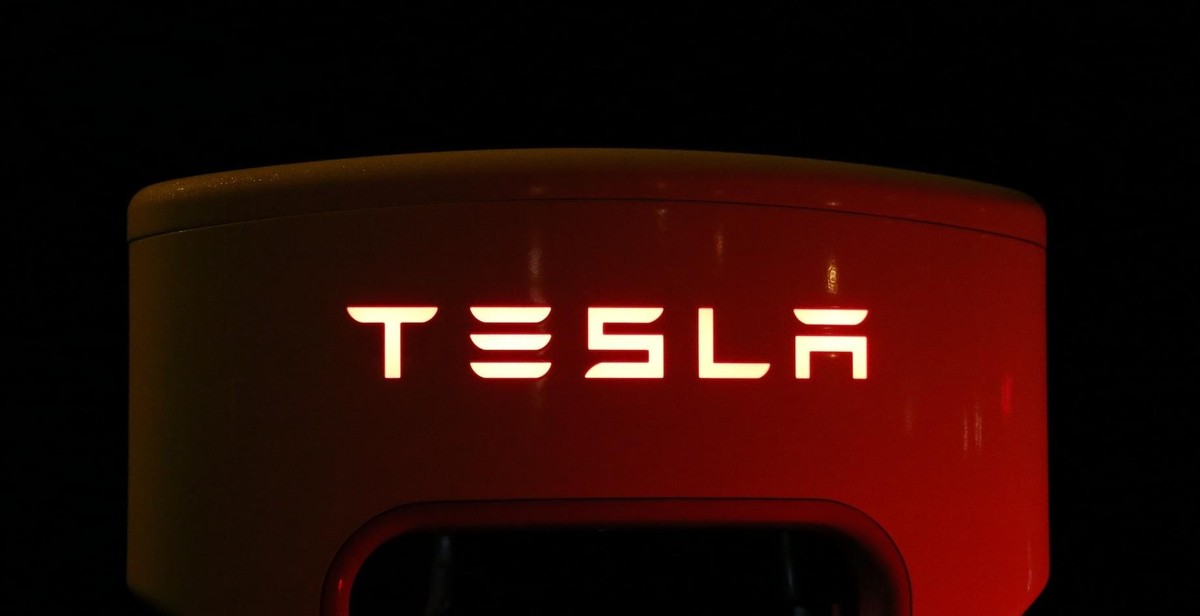Introduction
As concerns about climate change and environmental sustainability continue to grow, there has been a significant shift towards green transportation options. Among the rising trends in this domain are electric bikes (e-bikes) and electric cars, which offer environmentally friendly alternatives to traditional gasoline-powered vehicles.
E-bikes have gained popularity as a convenient and eco-friendly mode of transportation in urban areas. These bicycles are equipped with electric motors that assist the rider’s pedaling, enabling them to travel longer distances with less effort. E-bikes not only reduce carbon emissions but also provide health benefits by encouraging physical activity and reducing air pollution in congested cities.
Electric cars, on the other hand, are becoming increasingly prevalent as a viable alternative to traditional automobiles. With advancements in battery technology, electric cars offer longer driving ranges and improved charging infrastructure. They produce zero tailpipe emissions, reducing greenhouse gas emissions and dependence on fossil fuels.
This article explores the rising trend of e-bikes and electric cars as green transportation options. We will delve into the benefits they offer, the challenges they face, and their potential impact on the environment and society. By understanding the advantages and limitations of these green vehicles, we can make informed decisions about their adoption and contribute to a more sustainable future.
Benefits of Green Transportation
Green transportation, including the use of e-bikes and electric cars, offers numerous advantages for both individuals and the environment. By embracing these eco-friendly transportation options, we can contribute to a greener and more sustainable future.
Reduced Carbon Emissions
One of the primary benefits of green transportation is the significant reduction in carbon emissions. Traditional vehicles powered by fossil fuels release harmful greenhouse gases into the atmosphere, contributing to climate change. In contrast, e-bikes and electric cars produce zero tailpipe emissions. By making the switch to these environmentally-friendly alternatives, we can help combat global warming and minimize our carbon footprint.
Improved Air Quality
The use of e-bikes and electric cars also leads to improved air quality in urban areas. Conventional vehicles emit pollutants such as nitrogen oxides, particulate matter, and volatile organic compounds, which have detrimental effects on human health. By opting for green transportation, we can reduce the release of these harmful substances, resulting in cleaner and healthier air for everyone to breathe.
Decreased Noise Pollution
Another advantage of green transportation is the reduction in noise pollution. Traditional vehicles with internal combustion engines generate significant noise levels, contributing to noise pollution in cities and residential areas. In contrast, e-bikes and electric cars operate silently, minimizing noise disturbances and creating a more peaceful environment. This can lead to improved quality of life for individuals living in urban settings.
By embracing green transportation options such as e-bikes and electric cars, we can reap the benefits of reduced carbon emissions, improved air quality, and decreased noise pollution. These advantages not only contribute to a healthier environment but also enhance our overall well-being. It is crucial for individuals, communities, and governments to support and promote the adoption of green transportation to create a sustainable future for generations to come.

E-Bikes: The Eco-Friendly Two-Wheelers
E-bikes, short for electric bikes, have gained significant popularity in recent years as a sustainable and efficient mode of transportation. These two-wheelers combine the convenience of a traditional bicycle with the added power of an electric motor, making them an excellent choice for both commuting and recreational purposes.
What are E-Bikes?
E-bikes are equipped with an electric motor that assists the rider while pedaling. The motor is powered by a rechargeable battery, which can be easily charged using a standard electrical outlet. Most e-bikes offer different levels of assistance, allowing riders to choose the amount of electric power they want to utilize.
Advantages of E-Bikes
E-bikes offer several advantages over traditional bicycles:
- Eco-Friendly: E-bikes are considered a green mode of transportation as they produce zero emissions. By opting for an e-bike, riders can contribute to reducing air pollution and carbon footprint.
- Effortless Commuting: The electric motor provides an additional boost, making it easier to navigate uphill climbs and longer distances. This makes e-bikes an ideal choice for commuting, especially in hilly areas.
- Health Benefits: While e-bikes provide motor assistance, riders still need to pedal, which promotes physical activity and helps improve cardiovascular health.
- Cost-Effective: E-bikes are more affordable than electric cars and require minimal maintenance compared to motorized vehicles.
E-Bikes vs Traditional Bicycles
While e-bikes share many similarities with traditional bicycles, they offer distinct advantages:
- Speed and Range: E-bikes can reach higher speeds and cover longer distances than traditional bicycles, thanks to the electric motor assistance.
- Less Physical Strain: The motor assistance makes it easier to pedal, reducing the physical strain on riders, especially during long rides or when carrying heavy loads.
- Flexibility: E-bikes allow riders to switch between using the electric motor and pedaling manually, providing flexibility based on individual preferences and terrain.
In conclusion, e-bikes offer an eco-friendly and efficient alternative to traditional bicycles. With their numerous benefits and increasing popularity, e-bikes are playing a significant role in the rising trend of green transportation.

Electric Cars: The Future of Sustainable Transportation
Electric cars have emerged as a significant solution to combat the environmental challenges posed by traditional gasoline-powered vehicles. With their advanced technology and eco-friendly features, electric cars are rapidly gaining popularity as the future of sustainable transportation.
Environmental Impact of Electric Cars
One of the primary reasons why electric cars are considered a game-changer in the automotive industry is their positive environmental impact. Unlike conventional vehicles, electric cars produce zero tailpipe emissions. By eliminating the combustion of fossil fuels, electric cars significantly reduce air pollution and greenhouse gas emissions that contribute to climate change.
Furthermore, electric cars also have a lower carbon footprint compared to their gasoline counterparts. Even when taking into account the emissions from electricity generation, electric cars still emit fewer greenhouse gases over their lifetime. As the world shifts towards renewable energy sources, the environmental benefits of electric cars will only continue to grow.
Benefits of Electric Cars
Electric cars offer numerous advantages over traditional vehicles. One of the most significant benefits is their energy efficiency. Electric cars convert around 77-81% of the electrical energy from the grid to power at the wheels, whereas gasoline-powered cars only achieve about 12-30% efficiency. This efficiency translates to lower energy consumption and reduced dependence on fossil fuels.
Another advantage of electric cars is their lower operating costs. Electricity is generally cheaper than gasoline, resulting in reduced fuel expenses. Additionally, electric cars have fewer moving parts, which means lower maintenance and repair costs compared to internal combustion engines.
Drawbacks of Electric Cars
Despite their numerous benefits, electric cars also have some drawbacks that need to be considered. One primary concern is their limited driving range. Most electric cars currently available on the market can travel around 100-300 miles on a single charge, which may not be sufficient for long-distance travel. However, the continuous advancements in battery technology are gradually increasing the range of electric vehicles.
Another drawback is the lack of charging infrastructure. Although charging stations are becoming more prevalent, they are still not as widespread as gasoline stations, making long trips a logistical challenge. However, governments and organizations worldwide are investing in expanding the charging network to encourage the adoption of electric cars.
Overall, electric cars hold immense potential in revolutionizing the transportation sector and reducing its environmental impact. As technology continues to evolve and infrastructure improves, electric cars are poised to play a pivotal role in creating a sustainable future.

Infrastructure and Support for Green Transportation
As the popularity of green transportation continues to rise, the need for adequate infrastructure and support becomes increasingly important. The development of charging stations for electric vehicles, the creation of bike lanes and infrastructure, and the implementation of government incentives are all crucial elements in promoting and sustaining the growth of green transportation.
Charging Stations for Electric Vehicles
One of the key components of facilitating the widespread adoption of electric vehicles is the establishment of a robust charging infrastructure. Charging stations need to be strategically located in areas where electric vehicle owners can easily access them. These stations should be equipped with fast-charging capabilities to minimize charging time and ensure convenience for users. Additionally, the integration of renewable energy sources into these charging stations can further enhance the environmental benefits of electric vehicles.
Bike Lanes and Infrastructure
Promoting the use of e-bikes and bicycles requires the development of dedicated bike lanes and infrastructure. These lanes should be well-maintained, clearly marked, and separated from vehicle traffic to ensure the safety of cyclists. Additionally, the inclusion of amenities such as bike racks, repair stations, and secure storage facilities can encourage more individuals to choose bicycles as a mode of transportation. By prioritizing the creation of bike-friendly infrastructure, cities can significantly reduce traffic congestion and improve air quality.
Government Incentives
The implementation of government incentives plays a crucial role in encouraging individuals to switch to green transportation options. These incentives can include tax credits, rebates, grants, and subsidies for purchasing electric vehicles or installing charging stations. Governments can also provide financial support for the construction of bike lanes and infrastructure. By offering these incentives, governments can effectively reduce the barriers to entry and make green transportation more affordable and accessible to a wider population.
In conclusion, the establishment of charging stations for electric vehicles, the development of bike lanes and infrastructure, and the implementation of government incentives are integral to the growth of green transportation. By investing in these key elements, communities can create a sustainable and environmentally-friendly transportation system that improves air quality, reduces congestion, and promotes healthier lifestyles.
Conclusion
Green transportation is no longer just a buzzword; it has become a necessity in today’s world. With increasing concerns about climate change and the need to reduce greenhouse gas emissions, e-bikes and electric cars have emerged as the rising trend in sustainable transportation.
Electric bikes, or e-bikes, offer a convenient and eco-friendly alternative to traditional bicycles. They provide an extra boost of power, allowing riders to travel longer distances with less effort. E-bikes are not only a great option for commuting but also for recreational purposes, making them a versatile choice for individuals of all ages.
Electric cars, on the other hand, are revolutionizing the automotive industry. With zero tailpipe emissions, they significantly reduce air pollution and dependence on fossil fuels. As technology advances, electric cars are becoming more affordable and accessible to the general public, making them a viable option for everyday transportation.
By embracing green transportation options like e-bikes and electric cars, individuals can contribute to a cleaner and healthier environment. These vehicles not only reduce carbon emissions but also promote sustainability and energy efficiency. Additionally, they offer cost savings in the long run, as they require less maintenance and rely on cheaper sources of energy.
In conclusion, the rising trend of e-bikes and electric cars is a positive step towards a greener future. As more people recognize the benefits of these sustainable transportation options, we can expect to see a significant reduction in pollution and a healthier planet for future generations. It is time to embrace green transportation and make a difference in the world we live in.
